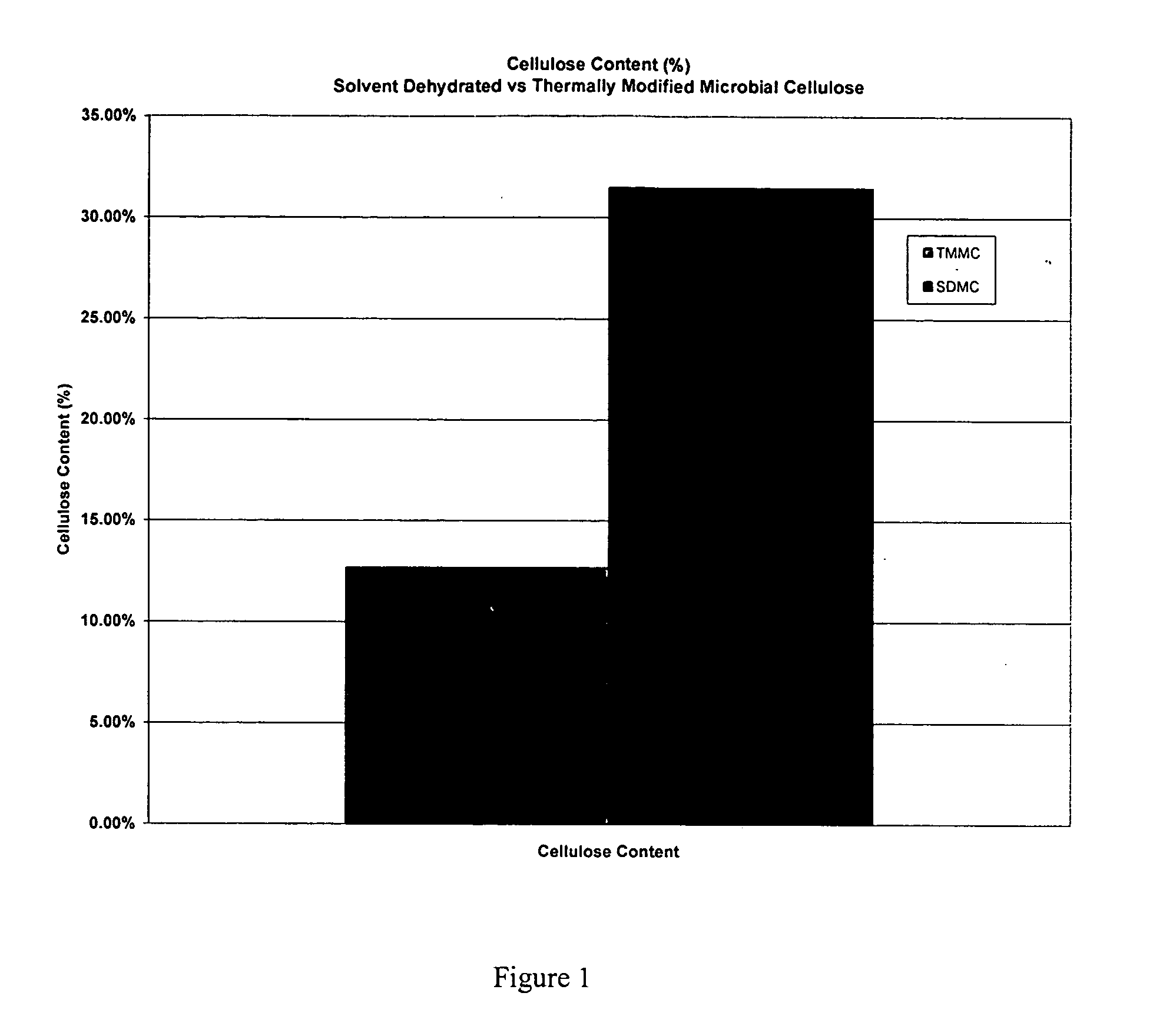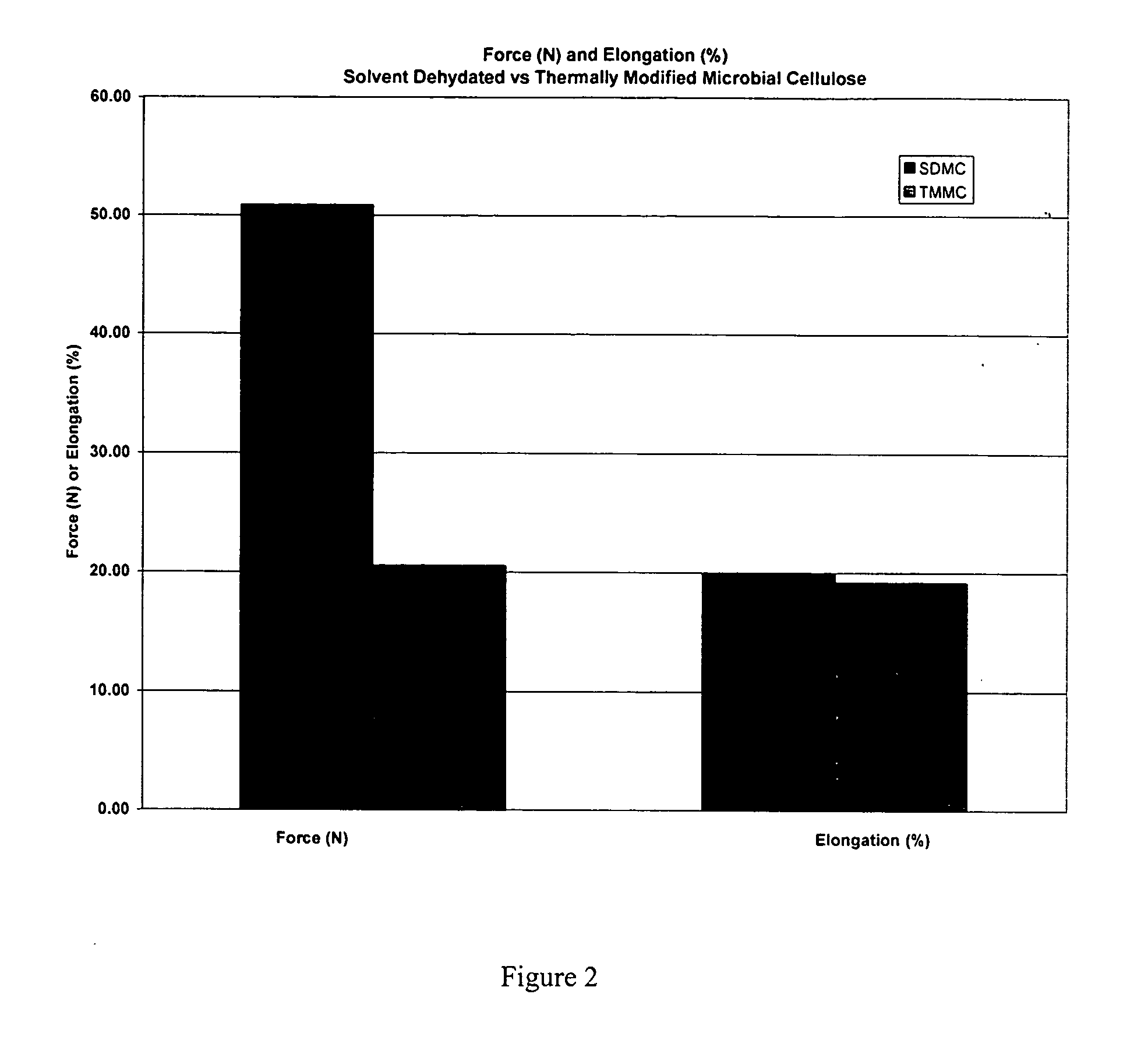Thermally modified microbial-derived cellulose for in vivo implantation
- Summary
- Abstract
- Description
- Claims
- Application Information
AI Technical Summary
Benefits of technology
Problems solved by technology
Method used
Image
Examples
example 1
Manufacture of Implantable Microbial-Derived Cellulose
[0039] This example is directed to a preparation of standard thermally modified microbial-derived cellulose films produced by A. xylinum within a controlled environment to minimize bioburden (microorganism contamination.) From a propagation vessel, sterilized media was inoculated with A. xylinum, filled into bioreactor trays at a volume of about 110 g, and incubated until optimal growth of the pellicle was observed. The pellicles were extracted from the trays and then underwent chemical processing (depyrogenation) in a tank of caustic solution that was heated for about one hour. The pellicles then underwent a continuous rinse with filtered water. The films were compressed within a pneumatic press to yield a pellicle having the desired weight and cellulose content.
[0040] The pressed films subsequently were placed in a closed container and the temperature decreased and held below 0° C. for varying periods of 2 to 10 days. The fil...
example 2
Manufacture of Thermally Modified Microbial-Derived Films of Varying Thicknesses
[0041] Various thicknesses of thermally modified microbial-derived cellulose films were produced by A. xylinum were prepared generally according to the procedure of Example 1.
[0042] From a propagation vessel, sterilized media was inoculated with A. xylinum, filled into bioreactor trays at different volumes and incubated until optimal growth of the pellicle was observed. The pellicles were extracted from the trays and then underwent chemical processing (depyrogenation) in a tank of sodium hydroxide (depending on the initial fill weight) which was heated for about one hour. The pellicles then underwent a continuous rinse with filtered water. The films were compressed with a pneumatic press to yield a pellicle with the desired weight and cellulose content.
[0043] The pressed films subsequently were placed in a closed container and the temperature decreased and held below 0° C. for varying periods of 2 to ...
example 3
Mechanical Properties of Thermally Modified Microbial-Derived Cellulose Films
[0045] A. Testing of Mechanical Properties of Microbial-Derived Cellulose
[0046] Mechanical tests of the subject thermally modified microbial-derived cellulose were performed to determine the tensile strength, elongation, and suture retention (pull-out) as applicable for an implantable medical material. Samples from the present invention were cut into either 1 cm×4 cm strips or 1 cm×8 cm strips for testing, using surgical scissors and a template. For example, each strip was not cut from an area parallel to the edge of the film, but strips were cut from various directions within the film to represent the overall area within each film. The thickness was measured using electronic calipers in millimeters, accurate to ±0.03 mm.
[0047] The mechanical properties of the thermally modified microbial-derived cellulose were determined using a tensile machine (United Calibration Corporation) Model SSTM-2kN with a load...
PUM
| Property | Measurement | Unit |
|---|---|---|
| Temperature | aaaaa | aaaaa |
| Time | aaaaa | aaaaa |
| Time | aaaaa | aaaaa |
Abstract
Description
Claims
Application Information
 Login to View More
Login to View More - R&D
- Intellectual Property
- Life Sciences
- Materials
- Tech Scout
- Unparalleled Data Quality
- Higher Quality Content
- 60% Fewer Hallucinations
Browse by: Latest US Patents, China's latest patents, Technical Efficacy Thesaurus, Application Domain, Technology Topic, Popular Technical Reports.
© 2025 PatSnap. All rights reserved.Legal|Privacy policy|Modern Slavery Act Transparency Statement|Sitemap|About US| Contact US: help@patsnap.com



